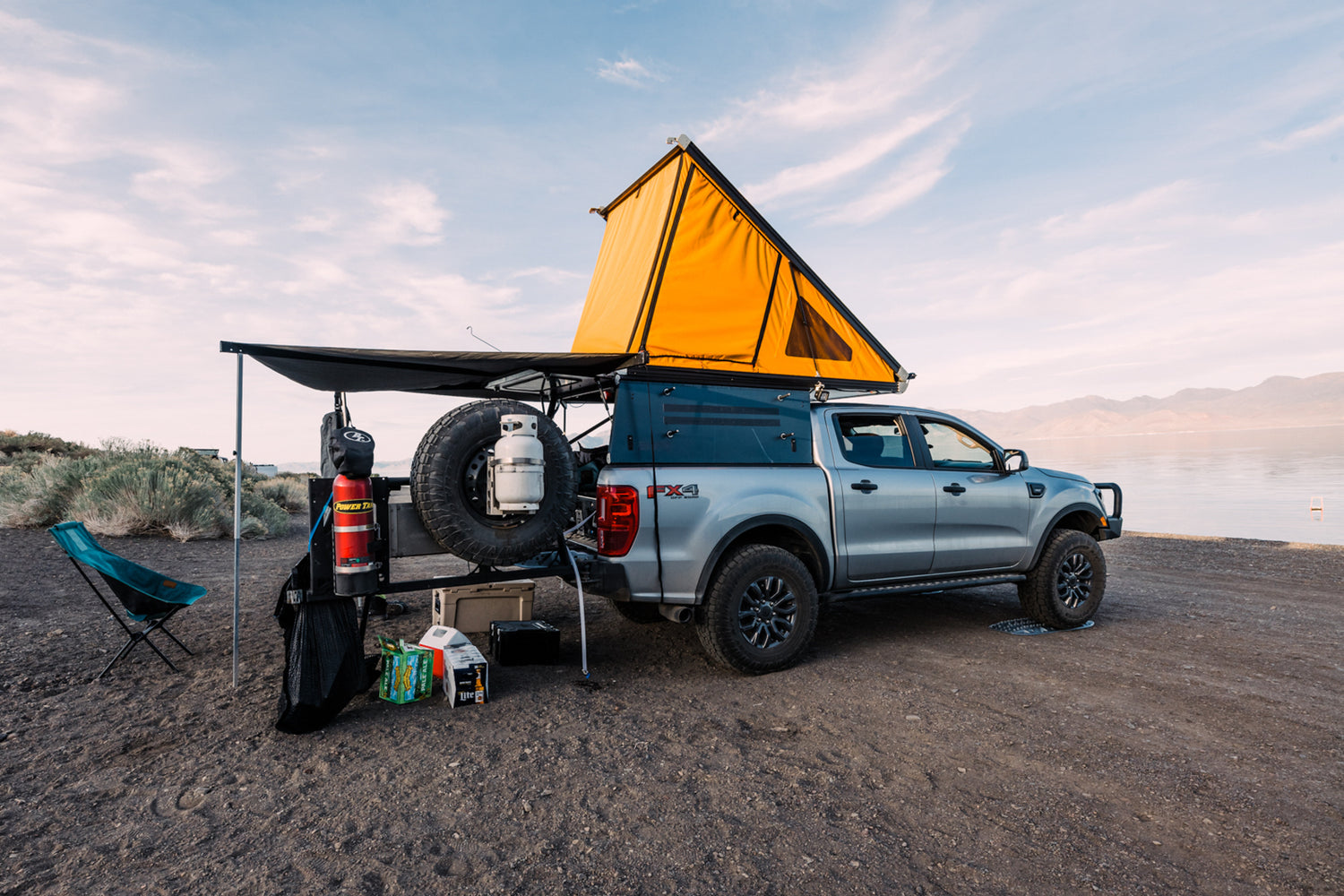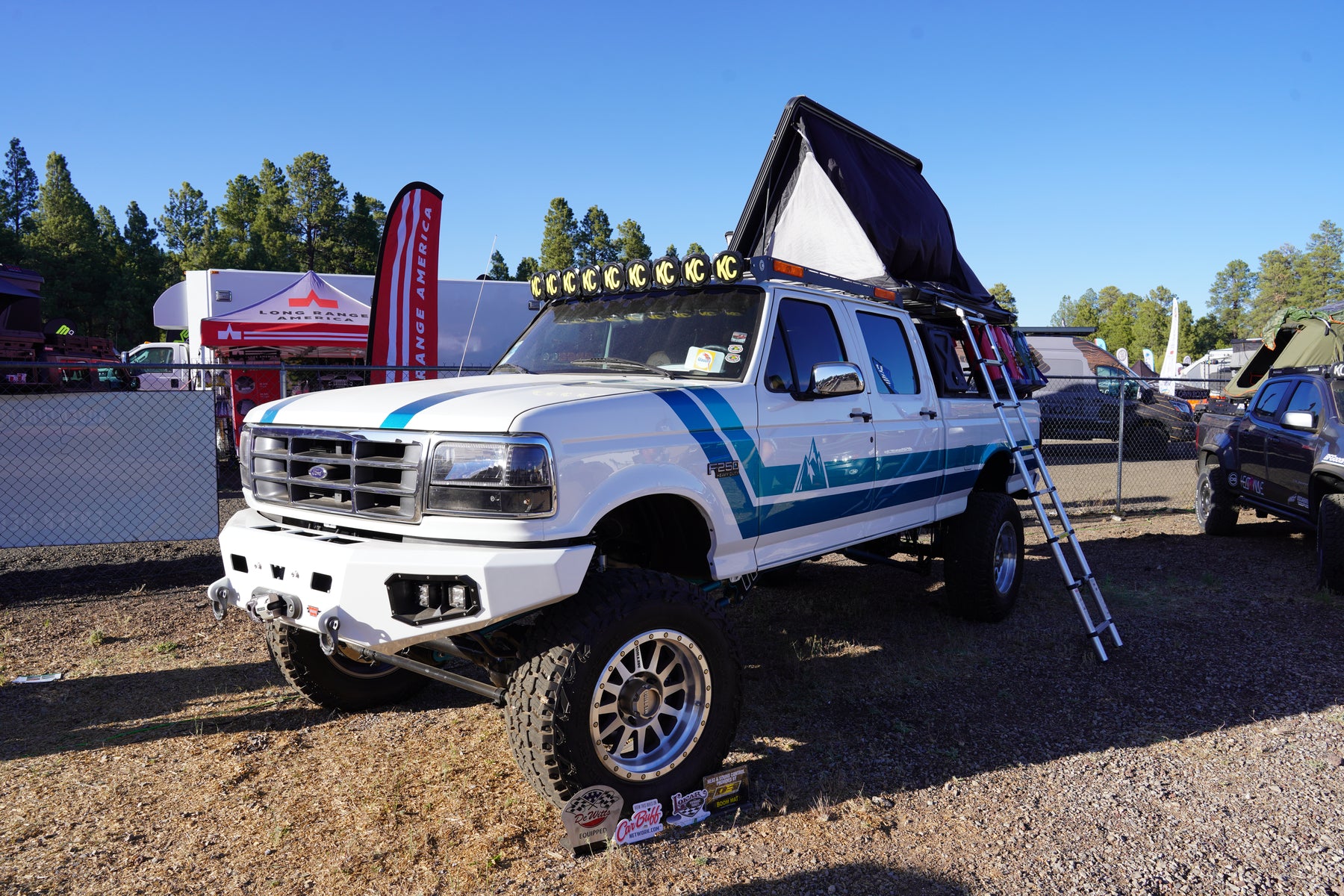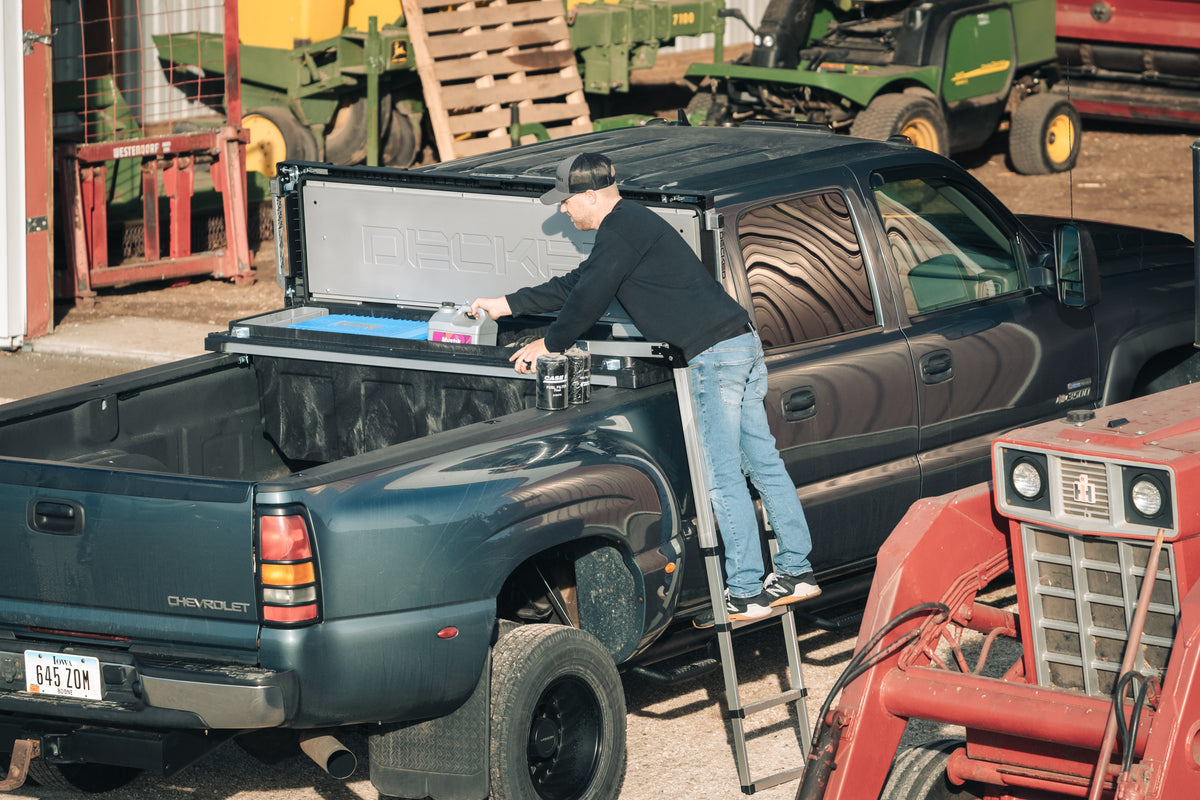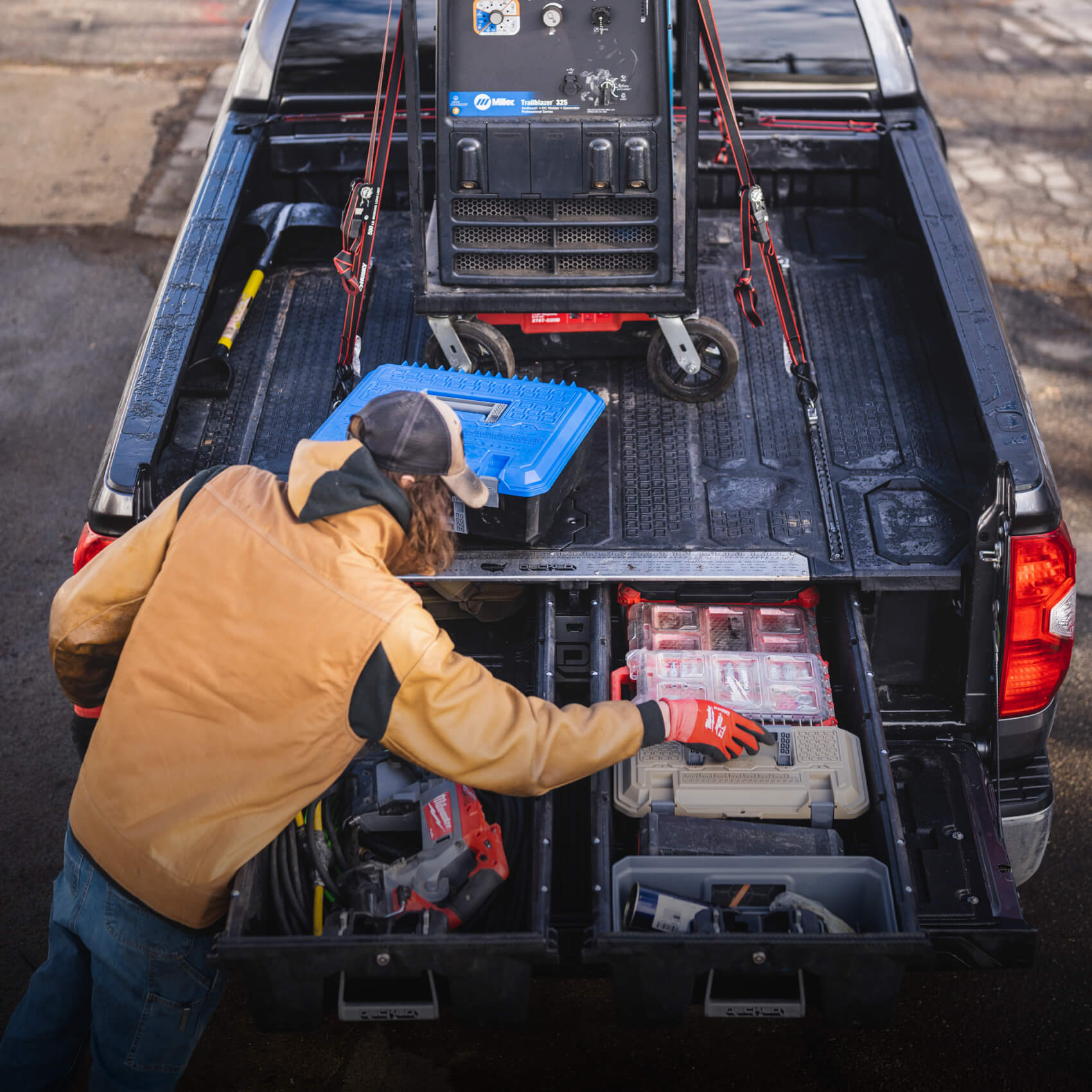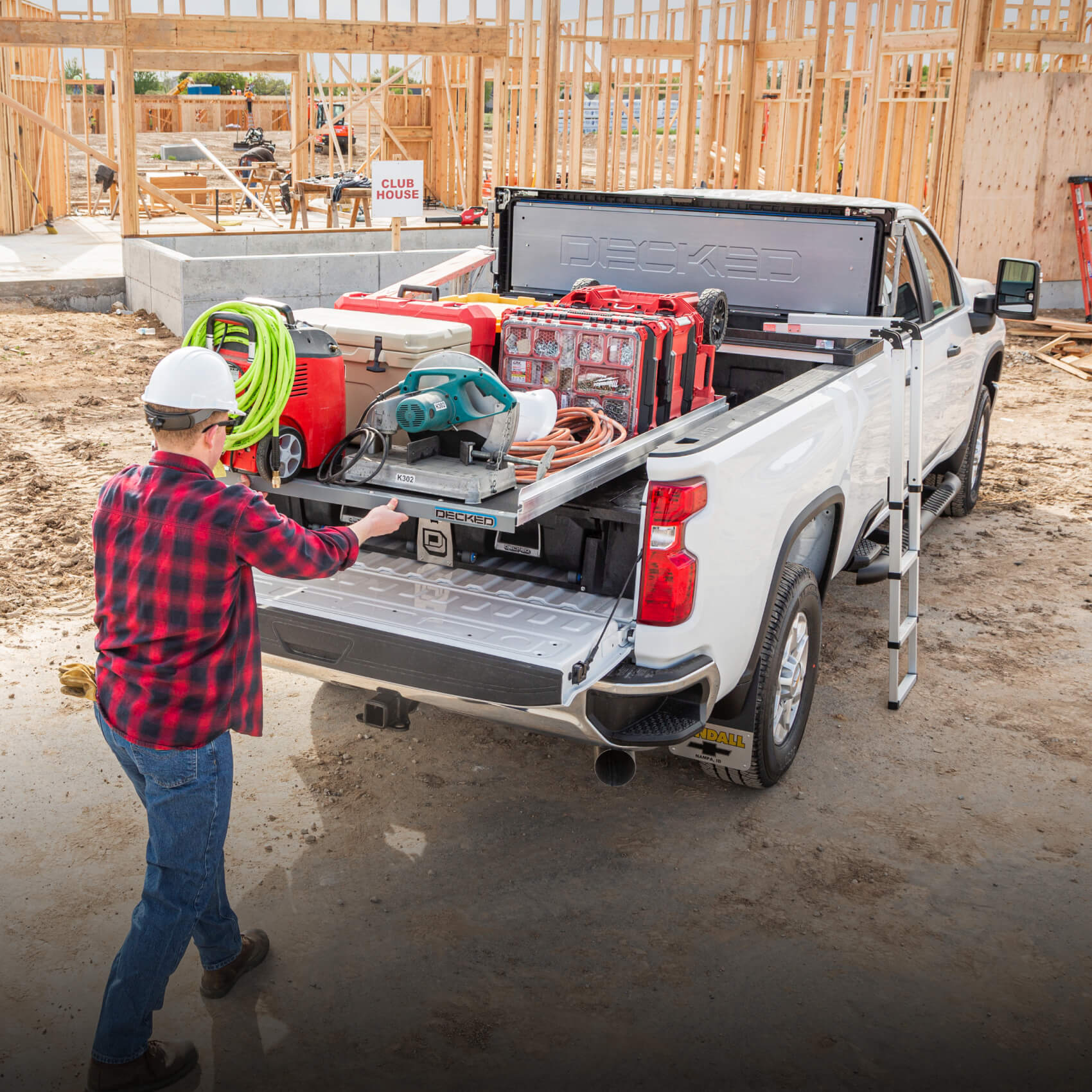Wes Siler is an adventurer, writer, and overlander who's equally at home stringing words together on a computer as he is ranging the backcountry of Montana dodging grizzly bears. He runs Outside Magazine's IndefinitelyWild, a lifestyle column focused on the outdoors and adventure travel.
He's amassed a wealth of knowledge that we regularly tap into for gear recommendations, hunting techniques, and the occasional epic story that inevitably surfaces when someone gets as close to the edge as he does.
It's no surprise that an outdoor gear junky like Wes has a vehicle totally modified to get him out of sticky situations with ease, so we're highlighting his 2021 Ford Ranger as our May Build of the Month.

Can you tell us a little about your build and what your goals were with piecing it together?
I wanted to create one vehicle that could support all my outdoor activities. Camping trips with my wife, friends, and dogs, and do it in a relatively compact package that would be easy to drive in town, on the highway, and off-road.
I landed on the Ranger after driving across Australia's Simpson desert a few years ago. In total we had eight trucks, and encountered really challenging conditions due to unseasonal rainfall turning most of the country to mud. Every truck broke at least a dozen times, and every truck got stuck about the same. Except the Ranger. It never even got a loose bolt, and never once had an issue on any terrain. It's actually Australia's best selling vehicle, besting the Toyota Hilux in both capability and popularity. I resolved to buy one as soon as they become available stateside. This is now my second Ranger, and I've had the chance to apply a lot of lessons learned from the first one to just absolutely nailing this build. It's unbelievably good to drive, and just totally sure footed everywhere.

Any custom mods or details you're proud of?
The night before I drove the first Ranger down to Todos Santos for my wedding, Graeme McPherson from GoFastCampers and I threw together a little camp table that folds down from the swingout. Made from spare sheet aluminum and aircraft cable, it's total overkill, but also the finest place upon which to rest an end-of-drive beer that I've ever found.

Are there other aftermarket additions you can't live without?
Everything here is the best part for the job, based on my experience driving off-road on six continents, and writing about 4x4s for over 20 years. And it all combines to create a really slick, cohesive build that's both good to drive and practical to live out of. The BP-51 suspension is unbelievably smooth, boasting both on-road handling and off-road ride quality. The lights go further into the darkness than any of the American brands, without any of the short distance glare that makes other setups so harsh to drive behind.
Pull into camp, pop the GFC, spread the awning, open the lift panels and the swingout, and I get a ready-to-go camp in under a minute. That setup's just killer everywhere from elk camp here in Montana, to remote beaches on the Sea of Cortez. And the GFC allows my wife and I to sleep comfortably no matter the weather, in the lightest, strongest package possible.

How do you keep your gear organized in the rig?
Aside from what's in the drawers, I use the CoreTrax to provide tie down points, allowing me to keep the fridge, gear boxes, soft stuff, or whatever else tied down and secure.
The biggest problem I've had is carrying all three of our dogs. When we don't have camping gear onboard, I just throw them in the back (and being able to pressure wash the DECKED system really helps there). When we travel, I've just been packing them into the back seat. But they barely fit, and complain the entire time. Fortunately, Goose Gear just developed a rear seat delete package for the Ranger, so I've got one of those on the way. Combined with a Raingler Dog Net behind the front seats, that should give them more space, and keep them contained.
I've also got a solar setup on the way from Zamp which makes its panels and batteries in Bend, Oregon. Plan is to mount 200 watts of solar to the roof of the GFC, then hide the batteries in the voids under the DECKED surface, and create the ability to power my fridge and camp gadgets without losing any space inside the bed.

Our favorite question: What's in your drawers?
I've got the smallest DECKED system made: mid-size, short bed. So, I've got to be smart about how I use what space is available. Starting with the wide drawer, I keep a comprehensive set of recovery gear from Gear America (good stuff that's good value) in a D-Box at the front of the drawer. Then I squeeze a Boulder Tools tire repair kit (more comprehensive than an ARB item) in between that and a Crossbox full of tools. Behind that I have a little spare space for trash bags, duct tape, and a med kit before you get to my Drawerganizer, which is where I throw stuff like sunscreen, bug spray, hand sanitizer, an air down tool, etc.
I use Crossboxes to make the narrow drawer flexible space that I change around based on activity. Right now there's a camp comfort box with an MSR canister stove, coffee, an Aeropress, some small lights, and stuff like that, followed by another box with a vet-level dog first aid kit. Behind that there's some open space that's currently filled by an Indeflate, and a dog water bowl. If I go shooting, I stick a Piecekeeper in that narrow drawer to keep my guns secure and out of sight. The nice thing about the D-Boxes and Crossboxes is they're so solid and easy to lift that they work just as well outside the drawers as they do in. So when I need drawer space for something else, I just strap them down to the top of the DECKED using the CoreTrax.
In the driver side ammo can, I keep a socket set and the air hose/inflator for the Powertank. In the right one I keep tire chains, tensioners, and tie down straps.


How has DECKED changed the way you use your rig?
It's enabled me to keep essentials onboard at all times in a way that makes them instantly accessible, secure, and clean and dry. And the flat load surface means carrying stuff has actually gotten easier.
I used to carry all that in a stack of camp boxes lashed to one of the bed tie down points. That made accessing stuff like recovery gear a real pain in the ass, and often involved unloading the entire truck just to get to those boxes. No more.
If you won the lottery, what would you add next? Or scrap it and buy...?
That's a hard question because the Ranger meets my needs too well right now. Mid-size trucks work great off-road due to their small dimensions, with the compromise obviously being space for humans, dogs, and gear. I've solved that so well here that I really don't need anything bigger. Having said that, I am eternally tempted by a Super Duty. Wiley Davis, the CEO at GFC, has a short cab long bed built up with Carli Suspension that I just find unbelievably appealing.
FULL BUILD LIST:
- Suspension : Complete Old Man Emu suspension with BP-51 coilovers and rear shocks. OME UCAs, OME medium weight rear springs.
- Protection : ARB Summit Front Bumper w/ Warn Zeon 10-S , Shrockworks sliders, Relentless rear bumper w/ swingout.
- Camper : GoGastCampers Platform V2 w/ Eezi Awn Bat 270 Awning
- LIghts : Lightforce Genesis Pro driving lights, 50" single-row Lightforce Nightfall light bar, Lightforce switches, Lightforce Rok 40 work lights (sides), Lightforce Rok 20 work lights (rear) Baja Designs S2 reverse lights in bumper.
- Tires : 285/75-17 Toyo Open Country ATIII on stock wheels (summer) 285/70-17 Nokian LT3 Studded on ROW Ranger Raptor wheels (winter). One inch Fab Tech Wheel spacers.
- Engine : Ford Performance tune , Magnaflow exhaust.
- Fuel : Trail'd Online Spare Tanks (2).
- Water : Frontrunner Upright Water Tank w/ extended hose.
- Air : Powertank 15lbs C02 Tank.
- Recovery : Maxtrax MKII Mounted to GFC. lift panel w/ Maxtrax pins and 40 lbs gas strus, DMOS Delta Shovel mounted to swingout.
- Food : Dometic CFX3 95 and PLB40 Battery.
